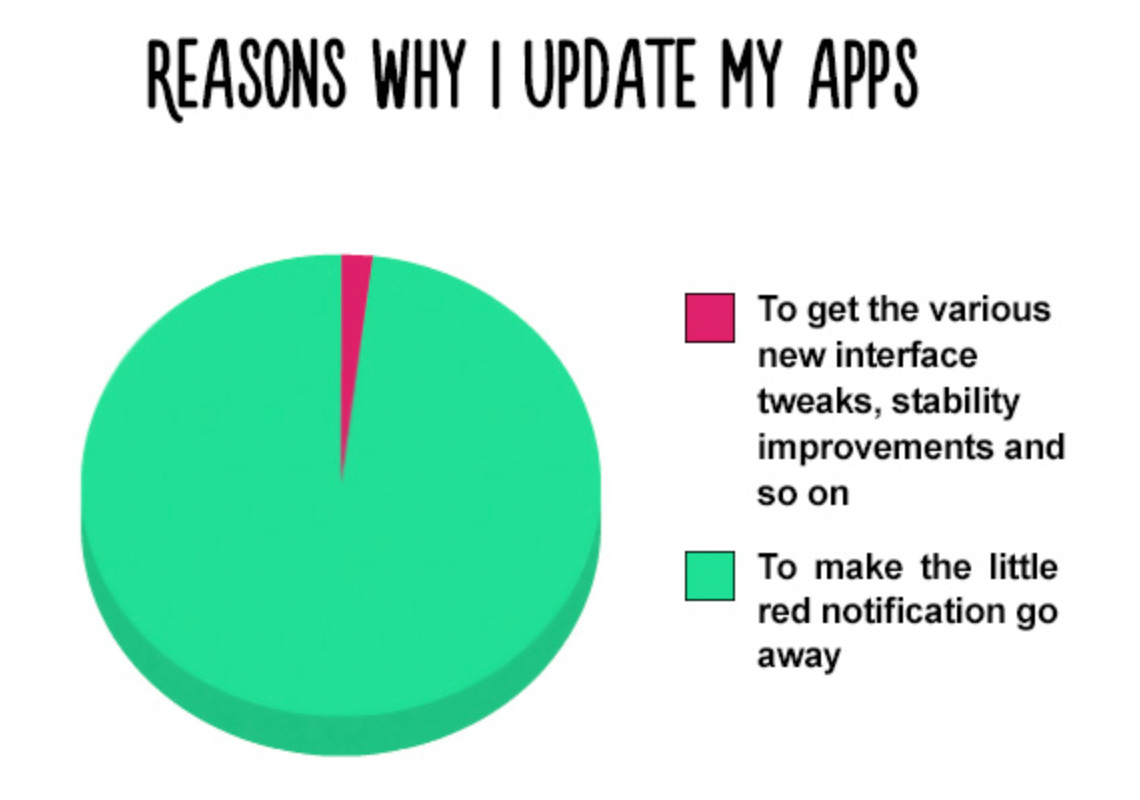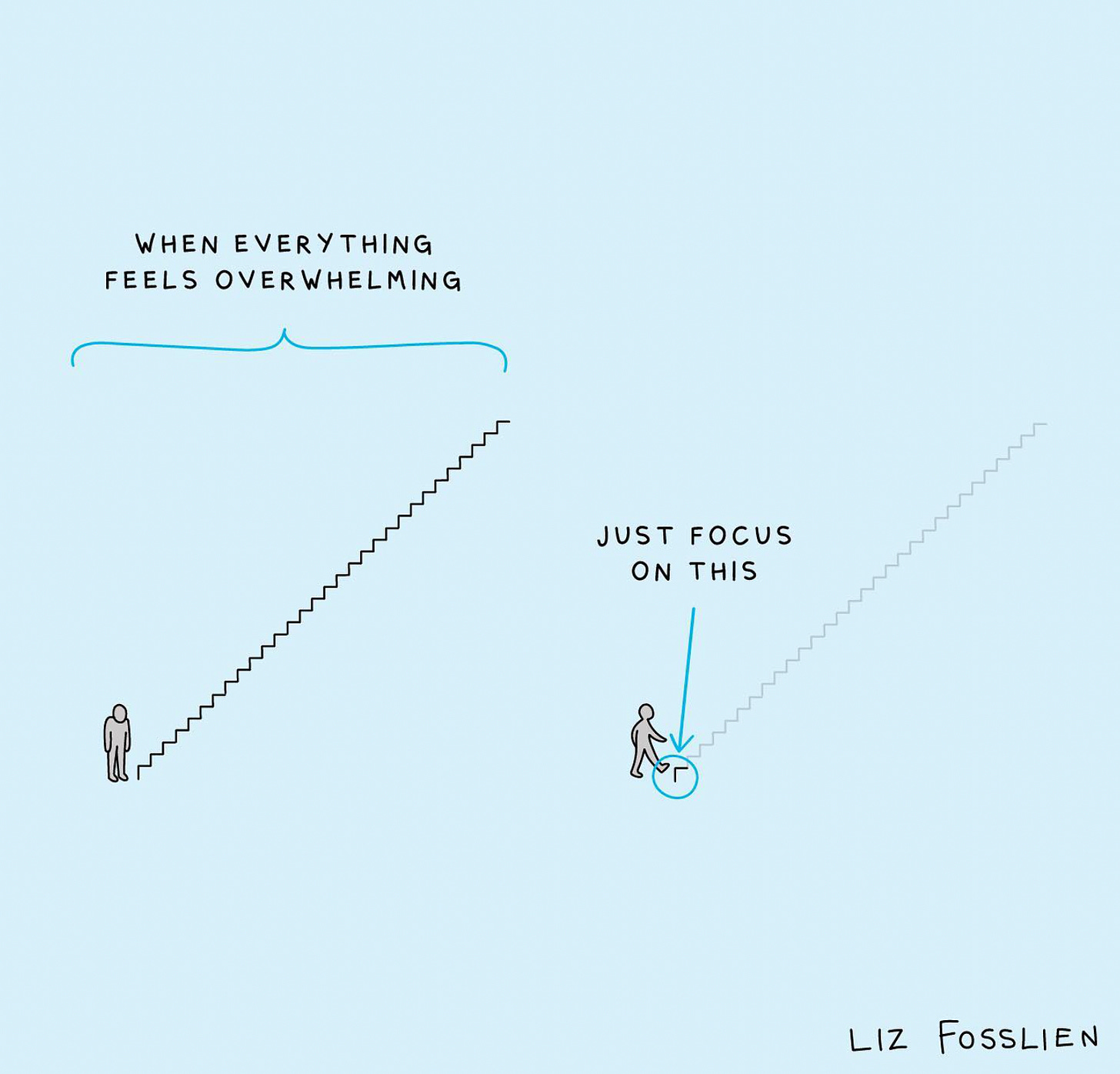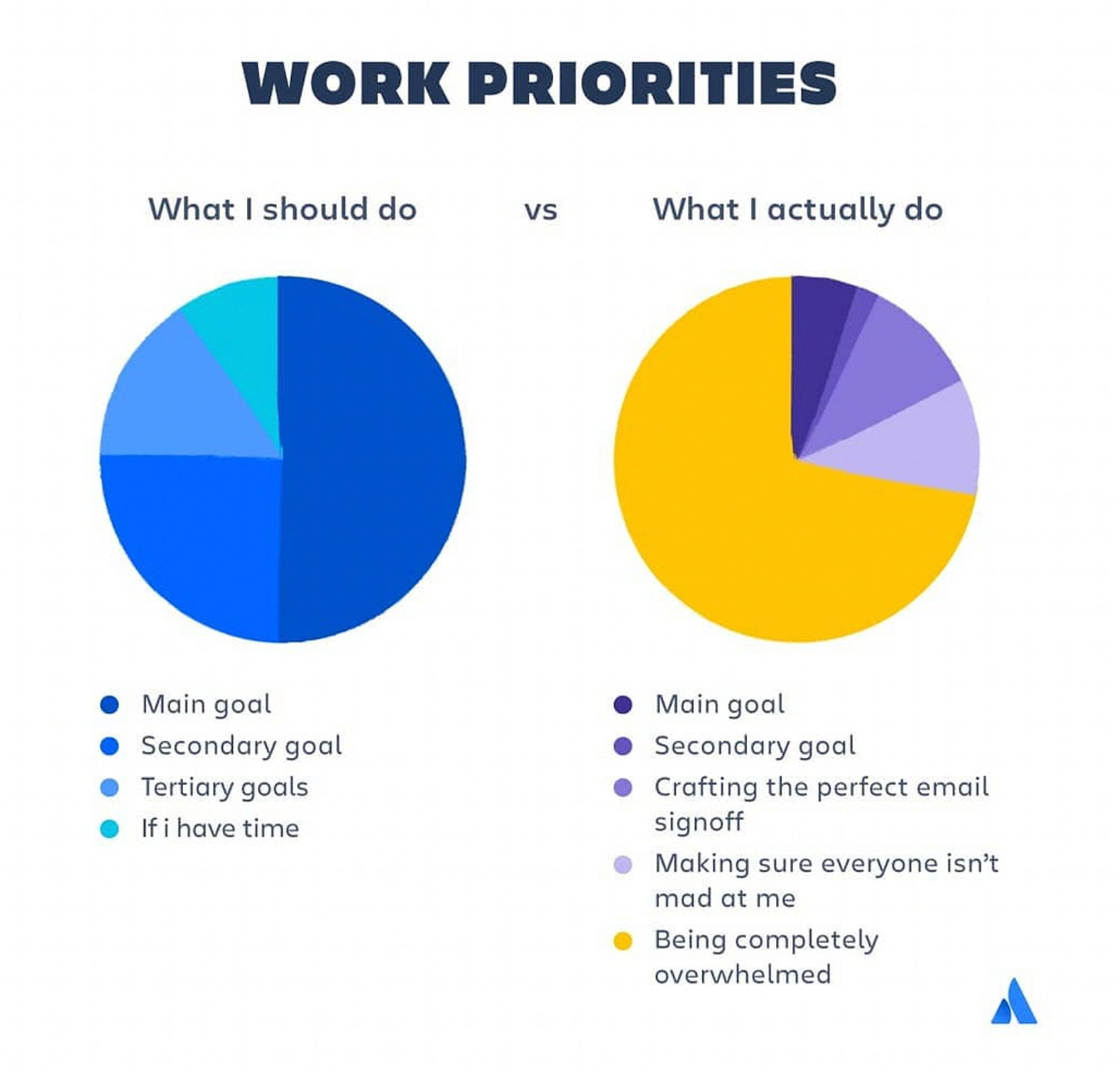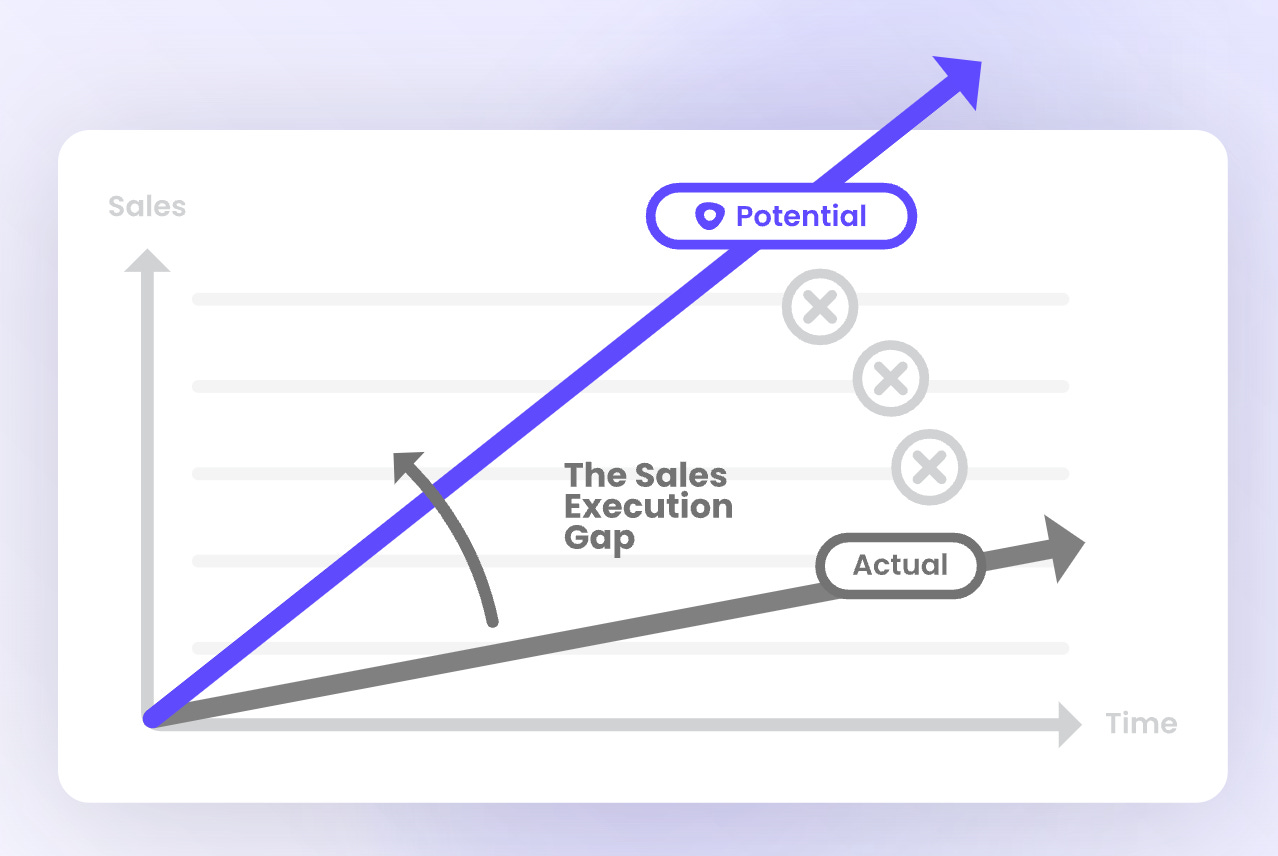Using simple visuals to tell complex stories
Examples from The Trade Desk, Atlassian, Zenput, Outreach, Geoffrey Moore
We’ve all seen those funny charts or illustrations that tell a simple, relatable story in a matter of seconds.
Unfortunate truths, inspirational metaphors, annoying day-in-the-life scenarios, etc.


I wondered recently why I don’t see more of this in marketing.
Marketers love to use visuals on their websites, email, social media etc. to help audiences understand their products and services. Most visuals are stock photos, screenshots, data/statistics, or memes – can’t forget about the memes. All of these can be great.
But the illustrations above and business examples I share below are especially powerful because of how simple they are to understand, and the unconstrained creativity used to make a point.
I say “unconstrained creativity” because with photos, screenshots, data/statistics, or memes, you do have constraints: finding the perfect stock photo (it’s never perfect), product screenshots of your mobile app are helpful but not great at storytelling, research data/stats are amazing but you’re limited to what data actually exists.
The examples below use stupidly-simple original illustrations to support their narratives, tell complex stories, and make their audiences think.
Crossing the Chasm by Geoffrey Moore
Audience: tech company executives
In his book Crossing the Chasm, Geoffrey Moore used a modified bell curve on the cover of the book to swiftly summarize what he spells out in the 288 pages that follow:
that tech startups inevitably face a life-or-death struggle in their attempt to grow from the early adopters stage to the early majority stage of technology adoption.
We’re all familiar with the bell curve. And even by the early 1990s (when the book was first published) versions of this technology adoption lifecycle (without Moore's chasm/gap) were commonly accepted.
With this visual he used well-established frameworks to tell a whole new story, just by adding a single gap.
The Trade Desk
Audience: marketing & advertising professionals

When making software purchase decisions, we typically don’t just make a call to a single vendor and pay up [ideal]. It’s often a long process with many steps, with several stakeholders involved, and is otherwise very complicated [reality].
The Trade Desk is in the advertising business.
Their visual could quickly make a marketer question to themself: are my strategies and systems set up to accommodate such long chaotic buying decisions, or are they too basic and based on wishful thinking.
Zenput
Audience: restaurant and retail chain business leaders

If you ask an executive at a company like Taco Bell or another large restaurant chain what their goals for the year are, location growth is likely to be one of them. Most restaurant chains want to get to their next 50, 100+ locations.
At Zenput we created this visual to hit our audience over the head with its simplicity:
That even if/when you achieve your location growth goals, it becomes significantly harder to run each new location successfully.
To create this chart using real data/stats would be impossible. But we didn’t need them in order to create a simple visual that most people in our industry would agree with even if it makes them uncomfortable.
Atlassian
Audience: project management & software engineering professionals

Many if not most of Atlassian’s products are used to track/manage projects and processes.
Atlassian’s visual here very simply reminds us of an uncomfortable truth: that despite our best intentions it’s just really difficult to be as productive as we hope to be with our time. If only there were tools for that AHEM Jira, Confluence, Trello, etc.
Outreach
Audience: sales leaders

It’s pretty simple: in sales you either hit your number or you don’t.
Outreach markets itself as a “sales execution platform” and uses this visual on the home page of their website to drive home the point that:
If you miss your sales number, it’s because there is work that wasn’t done that could have been done. (And perhaps Outreach is the company to help make sure that it does get done.)




Another great post Pete!